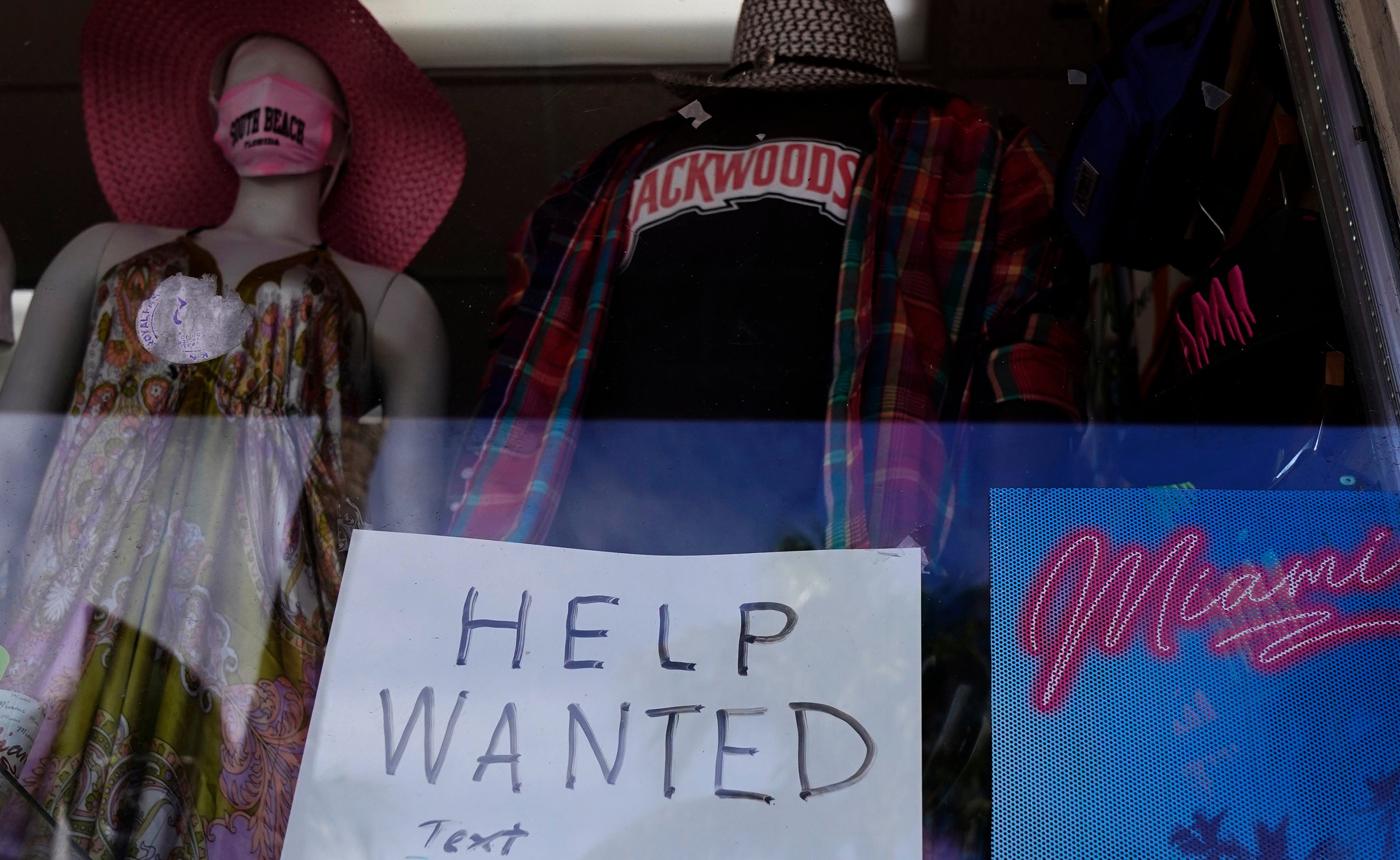Job openings down in most industries, while layoffs spike
Layoffs spiked in November compared with the previous month and the number of job openings slipped, a sign the job market has stalled as the resurgent coronavirus has forced new shutdowns of restaurants and bars and discouraged consumer spending

Your support helps us to tell the story
From reproductive rights to climate change to Big Tech, The Independent is on the ground when the story is developing. Whether it's investigating the financials of Elon Musk's pro-Trump PAC or producing our latest documentary, 'The A Word', which shines a light on the American women fighting for reproductive rights, we know how important it is to parse out the facts from the messaging.
At such a critical moment in US history, we need reporters on the ground. Your donation allows us to keep sending journalists to speak to both sides of the story.
The Independent is trusted by Americans across the entire political spectrum. And unlike many other quality news outlets, we choose not to lock Americans out of our reporting and analysis with paywalls. We believe quality journalism should be available to everyone, paid for by those who can afford it.
Your support makes all the difference.Layoffs spiked in November compared with the previous month and the number of job openings slipped, signaling that the job market has stalled as the resurgent coronavirus has brought about another wave shutdowns of restaurants and bars and hobbled consumer spending.
While the layoffs were concentrated among restaurants, bars and hotels, the slowdown in job postings was widespread across most industries, showing a reluctance by businesses to hire more people amid a pandemic fueled recession.
The number of open jobs at the end of November slipped 1.6% to 6.5 million, the Labor Department said Tuesday, its first drop since August. Layoffs, however, soared 17.6% to 1.9 million, driven mostly by job cuts at restaurants, bars and hotels, which more than doubled.
The economy is likely to grow at a healthier pace later this year, economists forecast, as vaccines are more widely distributed and recent government stimulus provides more money for Americans to spend. The faster growth should boost hiring, but most employers for now appear to be in wait-and-see mode.
On Friday, the Labor Department said employers cut 140,000 jobs in December, the first time the nation has shed jobs since April when U.S. infections began to surge. The unemployment rate was stuck at a still-high 6.7%, the first time it hasn't declined since April. Jobs lost according to that report were also highly concentrated in fields like educational services and film production, as well as already suffering restaurants and hotels.
Tuesday’s report, known as the Job Openings and Labor Turnover Survey, or JOLTS, adds more details about hiring and firing by businesses and government agencies. The data on open jobs provides insights into whether companies expect business to improve enough in coming months to justify additional hiring.
Last week, job postings website Indeed said that while companies listed more jobs in December, the pace had slowed from previous months.
While layoffs have been concentrated in mostly lower-paying jobs, Indeed's data shows that job postings have declined by a larger amount for the highest paying one-third of positions, and by the least for the lowest-paying third. That also suggests firms are still uncertain about the business outlook and reluctant to commit to hiring higher-paid employees.